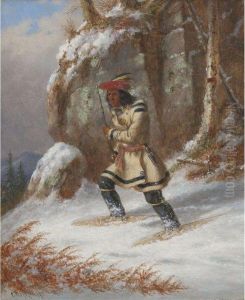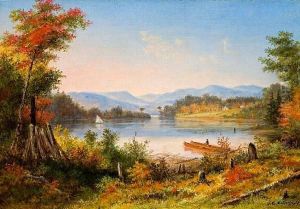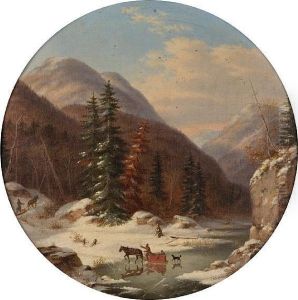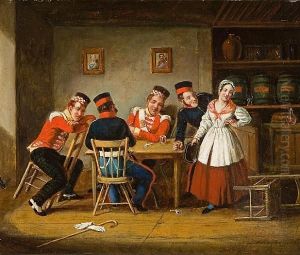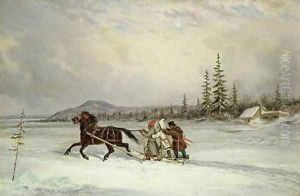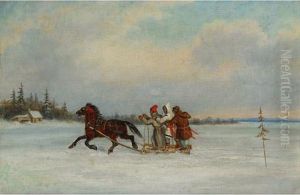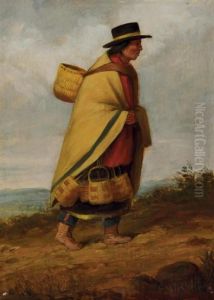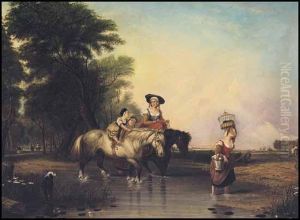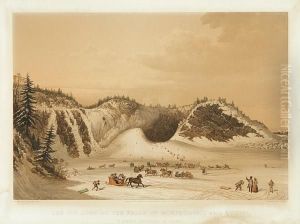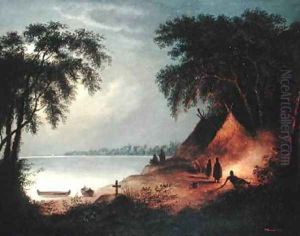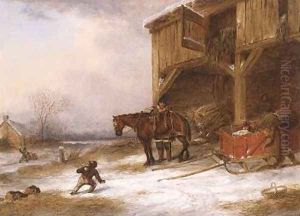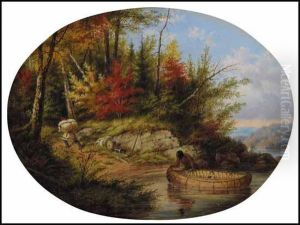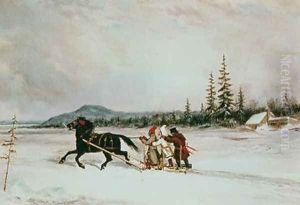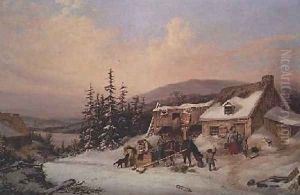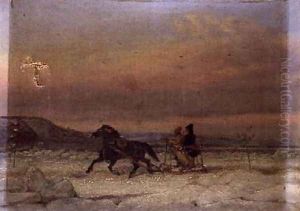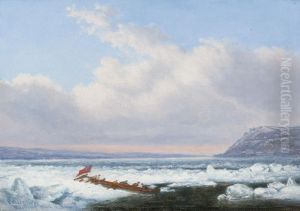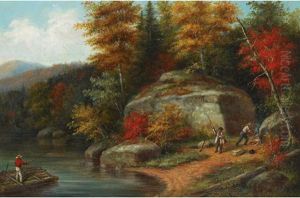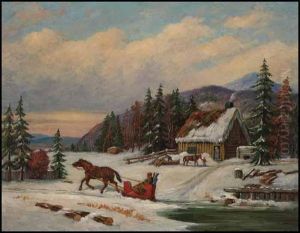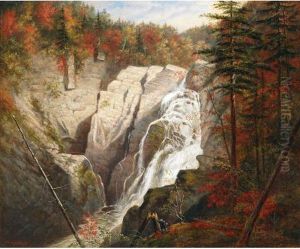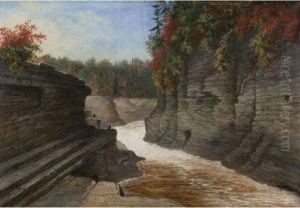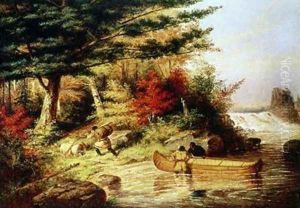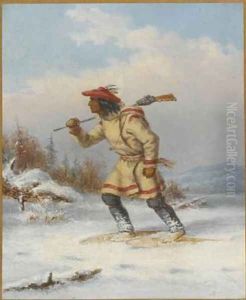Cornelius Krieghoff Paintings
Cornelius Krieghoff was a painter of Dutch birth who is most famously associated with his depictions of the Canadian landscape and life in the rural areas of 19th century Canada, particularly the region of Quebec. Born on June 19, 1815, in Amsterdam, Netherlands, Krieghoff emigrated to North America in the 1830s after spending time in Europe, where he was influenced by the European tradition of landscape painting.
Krieghoff initially settled in the United States, but eventually moved to Canada, where he became enchanted by the Canadian wilderness and the diverse cultures within. He spent a significant part of his career in Quebec, where he was particularly struck by the way of life of the habitants (French-Canadian farmers), the indigenous peoples, and the dramatic seasonal variations. Krieghoff's paintings often depicted these subjects in a romanticized manner, which was common in the art of this period.
He was skilled at capturing the light, atmosphere, and the changing seasons of the Canadian landscape. His works often included lively scenes with a sense of humor and detailed observation, which made them popular in his time and have continued to hold historical value. Krieghoff's representations of winter scenes are particularly notable for their dynamic portrayal of snow and ice, capturing the harsh and beautiful conditions of Canadian winters.
Despite Krieghoff's popularity in his lifetime, he struggled financially and moved frequently between Canada and Europe, searching for patrons and markets for his work. He spent the last years of his life in Chicago, United States, where he continued to paint Canadian scenes from memory. Cornelius Krieghoff died on March 5, 1872, in Chicago. His work has since been recognized for its importance in documenting the early cultural landscape of Canada and has been celebrated in numerous exhibitions and collections across the country and internationally.













